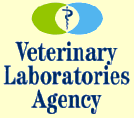



UK Poultry Disease Monthly Surveillance Report (to March 2005)
By Veterinary Laboratories Agency - This report monitors trends in the major endemic poultry diseases and utilises the farmfile and VIDA (Veterinary Investigation Disease Analysis) databases. The report is compiled using disease data gathered by the network of 15 VLA regional laboratories which carry out disease investigation in the field.
 Published March 2005 Highlights Spiking Mortality Syndrome Pseudomonas septicaemia Ammonia blindness |
Salmonellosis
Probable hypoglycaemia (“spiking mortality syndrome”) was the diagnosis for
a batch of 21-day-old broilers presented with a history of a sharp increase in
mortality, lasting for 3 days. Post-mortem examination revealed congested
livers, pale spleens with blood splashes and absence of food in the upper
digestive tract.
A definitive diagnosis of this condition, which tends to occur
more in winter and often following one or more interruptions of the feed
supply, depends on the demonstration of blood glucose levels in moribund
birds considerably lower than the published reference range of approximately
7.6 – 20.1 mmol/l.
Pseudomonas septicaemia
Pseudomonas aeruginosa septicaemia and arthritis were diagnosed in 6-dayold layer breeders. Routine cultures of liver, spleen and hock joints produced good virtually pure growths of Pseudomonas aeruginosa. Possible sources of this infection such as the hatchery, contaminated vaccination equipment, and source flocks were discussed.
Ammonia blindness
Ammonia blindness was the most likely diagnosis in 14-week-old commercial
layer pullets with a history of eye irritation. The flock had undergone ILT
vaccination two weeks or so before submission and the veterinarian in charge
wished to rule out the possibility of ILT involvement.
Birds submitted alive
were sitting on their hocks with tightly closed eyes and had bilateral corneal
opacity and a mild conjunctivitis. Histopathological examination confirmed a
mild to moderate kerato-conjunctivitis with small areas of corneal ulceration,
but with no evidence of ILT.
Ostrich
Three adult ostriches that had died over a period of 3 days were submitted to
Penrith for post-mortem examination. The proventriculus of each bird was full
of grit or straw, and in one bird this had impacted. Histopathological
examination revealed the presence of a large number of nematodes in the
gizzard mucosa.
Differentiation of nematodes can be difficult
histopathologically, however, heavy infestations of the wireworm
Libyostrongylus Douglas, which lives in the openings of the deep
proventricular glands and under the koilin layer of the proventriculus and
gizzard, is known to cause a severe gastritis with subsequent gastric stasis.
This could have been responsible for the deaths of these three animals.
To read the full report please click here (PDF)
Source: Veterinary Laboratories Agency - March 2005








